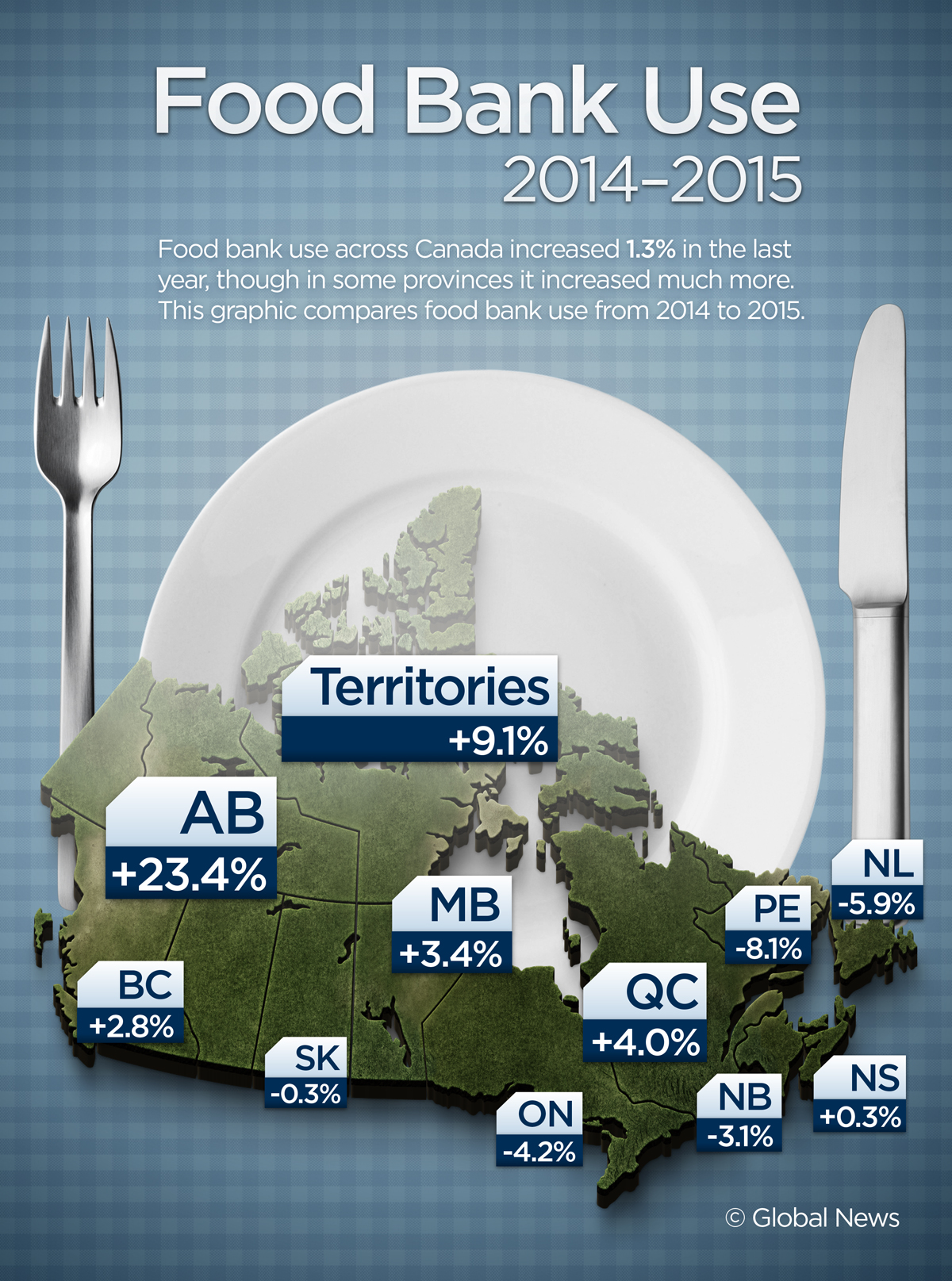A national study on food bank use finds more and more Canadians are once again turning to the service to get by.

But how does British Columbia fare compared to the rest of the country?
To understand the growing hunger issue in Canada, one has to look at the history of the Greater Vancouver Food Bank. It was set up in 1982 as a temporarily relief to the hunger crisis. At the time they served about 200 members a week, but the need is still growing.
“The number of people we support these days could fill Rogers Arena 1.5 times every single week,” Ariela Friedmann with Greater Vancouver Food Bank told Global News.
But the Greater Vancouver Food Bank is not alone. Food Banks Canada has just released a new report called “HungerCount” and the numbers are painting a bleak picture.
WATCH: Executive director of Food Banks Canada – there is enough food in this country to feed everybody
The report found that this past March, 852,137 people visited a food bank, up just over one per cent from the 841,191 recorded in 2014, but still below the 10-year high of 872,379 recorded in 2013.
The report this year found that almost 36 per cent of users, or about 305,000, were children. That’s equivalent to about 4,260 yellow school buses filled to their 72-seat capacity.
The report also highlights how food banks have evolved over time. They now provide services that go beyond the simple provisions of food.
READ MORE: Going Hungry: Food bank visits spike across Canada – in Alberta most of all
At the Greater Vancouver food bank, for example, they aid with community kitchens.
“We support 94 agencies in the community,” says Friedmann. “We provide the food to the community kitchens and train community kitchen leaders on how to take simple ingredients to make a good nutritious home cooked meal.”
- B.C. musician’s Canucks-themed video lands him a gig at Rogers Arena playoff pregame
- Excitement builds in Vancouver ahead of Canucks Game 1 matchup vs. Edmonton Oilers
- ICBC customers set to receive $110 rebate as basic rates remain steady
- No Canucks viewing party for Game 1 or 2, but Vancouver mayor has plans for Game 3
Food Banks Canada is using the report to renew its push for the federal and provincial governments to do away with the social assistance programs. The group wants to see the existing bureaucracies that oversee social benefits, such as disability payments, instead funnel all the savings into tax measures that would put more money into the hands of low-income earners.
Food bank use in Canada by the numbers
A by-the-numbers look at food bank use from the Food Banks Canada HungerCount 2015 report:
852,137: people who received food from a food bank in March 2015.
78,693: people who accessed a food bank for the first time in March 2015.
5 per cent: Families using foodbanks who are homeless.
67 per cent: Food bank users who live in rental housing and pay market rents.
7 per cent: Food bank users who own their home.
35.8 per cent: Food bank users who are children.
16 per cent: Food bank users who are First Nations, Metis, or Inuit.
10 per cent: Food bank users who are immigrants or refugees who arrived in Canada in the past 10 years.
4,395,601: Meals and snacks provided annually through soup kitchens, shelters, school breakfast programs and other initiatives.
How British Columbians can help
The Greater Vancouver Food Bank accepts both cash and food donations.
Money can be donated online, by mail, over the phone and in person. For more information, go here.
Food donations are accepted at the food bank’s warehouse at 1150 Raymur Avenue in Vancouver. It is open Monday to Friday between 7 a.m. and 3 p.m.
You can also drop off non-perishable food items at participating grocery stores in Vancouver, Burnaby and the North Shore. For more information, go here.
With files from Grace Ke and the Canadian Press




Comments